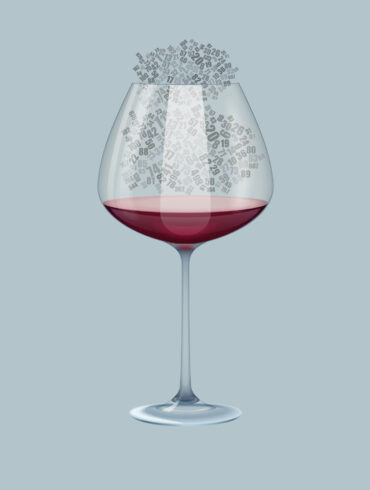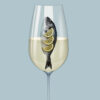The Historical Evolution of Wine Scores
The world of wine is rich, complex, and sometimes mystifying. For decades, wine scores have played a significant role in helping consumers navigate this intricate landscape.
Wine scores, the numerical assessments that help consumers navigate the world of wine, have a long history and have evolved significantly over time. Let’s journey through the historical context of wine scores, from their humble beginnings to their contemporary significance.
Ancient Origins: Tasting as Tradition
Wine appreciation can be traced back to ancient civilisations, where wine was often enjoyed in ceremonial and social contexts. While the concept of assigning numerical scores did not exist, early wine drinkers developed their own sensory evaluation criteria. They described wines in poetic and metaphorical terms, emphasising their qualities and attributes.
The Birth of Modern Critique: Bordeaux Classification of 1855
The modern wine score system as we know it began to take shape in the mid-19th century. The Bordeaux Classification of 1855 (Grands Crus Classés), established upon the request of Napoleon, was a defining moment in wine evaluation. It ranked the top Bordeaux wines based on market prices and reputation, categorising these from 1st to 5th growths (Premier Cru, Deuxième Cru, and so on…) as a way of presenting the wines to foreign visitors at the Exposition Universelle in Paris that same year. While not numerical scores, this classification marked a shift towards a more systematic approach to wine assessment.
20th Century Innovations: Parker and the 100-Point Scale
The 20th century brought significant changes to wine scoring. In the 1970s, Robert Parker, a lawyer from the state of Maryland (USA), emerged as a prominent wine critic, introducing the widely adopted 100-point scale in “The Wine Advocate” newsletter. This scale aimed to provide consumers with a clear, standardised measure of wine quality. It brought objectivity and consistency to wine critique, transforming the way wines were assessed and marketed internationally. To this day, a Parker (Wine Advocate) score can make or break a winery’s reputation.
Globalisation and Proliferation
As wine production and consumption spread globally, wine scores gained prominence beyond traditional wine regions. Critics and publications worldwide began employing the 100-point scale, creating a global wine evaluation standard. This globalisation allowed consumers to compare wines from diverse regions using a common language.
Criticism and Controversy
Despite their widespread use, wine scores have faced criticism. Detractors argue that scores oversimplify wine evaluation, emphasising taste over other aspects like culture and terroir. Critics also point out the subjectivity inherent in assigning scores, as individual palates and biases play a role.
Diversity in Scoring: Beyond Parker
The wine industry has seen the emergence of numerous international wine critics, each with their unique scoring systems and preferences. This diversification allows consumers to consider a range of perspectives when making wine choices.
In the digital age, wine scores are more accessible than ever. Online platforms and apps provide instant access to scores and reviews. Yet, the wine score system is not without its controversies and challenges. In the following section, we’ll explore the pros and cons of the wine score system, aiming to shed light on its place in the world of wine appreciation.
The Pros of the Wine Score System:
1. Accessibility: Wine scores offer a straightforward way for consumers to assess a wine’s quality quickly. They provide a benchmark that can guide purchasing decisions, especially for those new to the wine world.
2. Consistency: When conducted by reputable wine critics, scoring can provide a level of consistency in evaluating wines. This can be helpful in comparing wines from different regions, vintages, or grape varieties.
3. Education: Wine scores can be educational. They encourage consumers to explore different wines and regions, fostering a sense of adventure in discovering new flavours.
4. Marketing Tool: For winemakers, high scores can serve as a powerful marketing tool. A favourable rating from a respected critic can boost a wine’s reputation and sales.
5. Standardisation: Scores create a standardised language for discussing wine quality. They allow for a common point of reference among wine enthusiasts and professionals.
The Cons of the Wine Score System:
1. Subjectivity: Wine scoring is inherently subjective. Different critics may assign vastly different scores to the same wine, influenced by personal preferences and biases.
2. Oversimplification: Reducing a complex sensory experience to a single number can oversimplify wine appreciation. It may not capture the full range of a wine’s characteristics, nuances, or the context in which it is enjoyed.
3. Narrow Focus: Scores often emphasise a wine’s taste and aroma, neglecting other essential aspects of wine, such as its cultural, historical, or terroir-related significance.
4. Inhibiting Exploration: Relying solely on scores can discourage exploration. It may lead consumers to favour highly rated wines and miss out on lesser-known gems that align with their personal preferences.
5. Commercial Pressures: The pursuit of high scores can sometimes lead winemakers to cater their wines to a particular international taste profile, potentially stifling creativity and respecting the style of their unique region. In short, it can inhibit diversity in the wine industry.
Conclusion: Finding Balance
To sum things up, scores can be both a blessing and a curse. They offer a convenient entry point for consumers, a marketing tool for winemakers, and a common language for enthusiasts. However, they also risk oversimplification, subjectivity, and the potential to overshadow other aspects of wine appreciation.
Ultimately, the key lies in balance. Wine scores can coexist with a deeper exploration of wine. They should be viewed as one tool among many for discovering and enjoying this intricate and diverse beverage. As wine enthusiasts, let’s appreciate the scores for what they are—guidelines, not gospel—and continue to explore the vast world of wine with curiosity and an open mind.
The discussion around wine scoring continues, with some enthusiasts embracing scores as a useful tool and others advocating for a more holistic approach to wine appreciation.
In conclusion, wine scores have evolved from ancient traditions to modern systems of evaluation. They have played a pivotal role in helping consumers make informed choices in a globalised wine market. However, the debate over their merits and limitations continues, highlighting the ongoing evolution of wine evaluation in a dynamic and diverse wine world.






